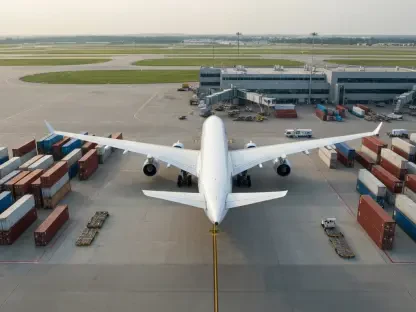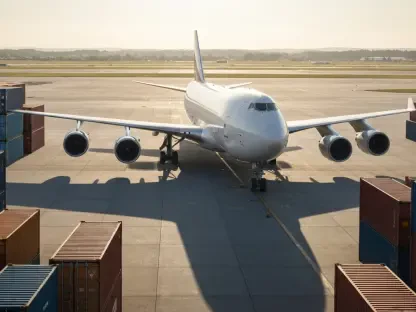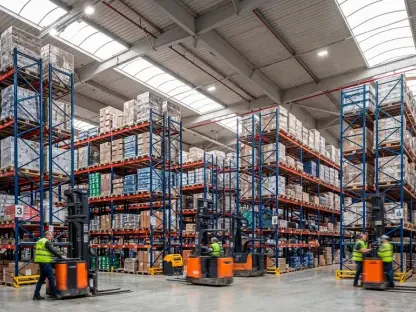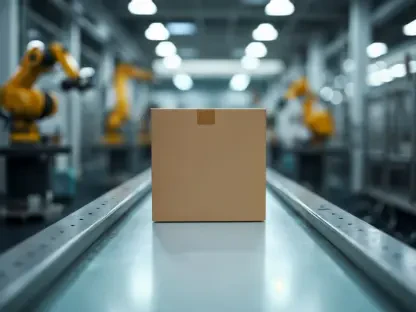Imagine a small online retailer in a rural town, eagerly awaiting a critical shipment of goods to fulfill holiday orders, only to face delays of several days due to postal service disruptions. This scenario is becoming increasingly common as the U.S. Postal Service (USPS) grapples with significant operational and financial challenges amidst an unprecedented e-commerce boom. With parcel volumes soaring to billions annually, the decline in USPS performance is sending shockwaves through delivery chains, affecting businesses of all sizes and reshaping logistics strategies. This roundup gathers insights, opinions, and tips from various industry perspectives to explore the depth of this crisis, uncover its implications for e-commerce, and provide actionable guidance for stakeholders navigating this shifting landscape.
Unpacking the USPS Crisis Amid E-Commerce Growth
The current state of USPS has sparked concern across the logistics sector, with many industry observers pointing to a stark mismatch between rising e-commerce demand and the agency’s shrinking capacity. Reports indicate that while overall parcel shipments have surged, USPS has experienced a notable drop in shipping volume, with a decline of 6.9% recorded in recent quarters. This discrepancy has left retailers and logistics providers scrambling to adapt, highlighting a critical need to understand the broader fallout.
Feedback from supply chain analysts suggests that financial losses, including a staggering $3.1 billion operating deficit this year, are compounding the problem. Inflationary pressures and reduced pricing power have further strained the agency, raising questions about its ability to remain competitive. These challenges are particularly alarming given the reliance of many businesses on affordable postal services for last-mile delivery.
A common thread among industry voices is the urgency of addressing this crisis before it further disrupts e-commerce ecosystems. Some logistics managers emphasize that the decline isn’t just a USPS issue but a signal of deeper structural shifts in delivery networks. Their insights set the stage for a closer examination of how various stakeholders are responding to these challenges and what it means for the future of shipping.
Exploring the Ripple Effects on Logistics and Delivery Systems
Operational Struggles and Financial Strain at USPS
A significant point of discussion among industry experts is the dramatic contrast between the growth of e-commerce parcels and the dwindling market share of USPS. Data reveals a sharp 40% drop in Priority Mail volume in recent months, a trend that many attribute to shifts toward cheaper alternatives and competing carriers. This erosion of high-margin services has left the agency vulnerable, prompting widespread concern about sustainability.
Logistics consultants note that cost-cutting initiatives, such as the introduction of Ground Advantage, aim to retain customers but often fall short of addressing deeper inefficiencies. The tension between maintaining affordability and covering operational losses has fueled debates about potential rate hikes. Some industry watchers warn that such measures could alienate smaller retailers who depend on reasonable shipping costs.
Conversations with e-commerce analysts reveal a consensus that these financial woes are not merely internal but have far-reaching consequences for delivery timelines and reliability. The fear is that continued losses might force drastic service reductions, particularly in less profitable regions. This perspective underscores the urgency for innovative solutions to stabilize the postal service’s role in the logistics chain.
Private Fleets Reshaping Last-Mile Delivery Dynamics
Retail giants like Amazon and Walmart have become focal points in discussions about the changing delivery landscape, with many experts highlighting their rapid expansion of private fleets. Projections estimate these companies will handle billions of packages annually in the near term, significantly reducing their reliance on traditional carriers like USPS. This shift is seen as a game-changer, offering greater control over delivery timelines for large players.
However, opinions vary on the broader implications of this trend. Some logistics professionals argue that while in-house fleets streamline operations for major retailers, they also introduce inefficiencies by fragmenting the delivery ecosystem. Rural areas, in particular, often face service gaps as private networks prioritize high-density urban zones, leaving smaller carriers to fill the void under strained conditions.
A balanced view from supply chain strategists suggests that this pivot to private fleets is a double-edged sword. On one hand, it drives competition and innovation; on the other, it risks creating an uneven playing field where smaller businesses struggle to keep pace. The consensus is that while big retailers benefit, the long-term impact on overall logistics cohesion remains uncertain, prompting calls for adaptive strategies.
Regional Disparities and Fragmented Delivery Networks
The uneven distribution of delivery services across urban, suburban, and rural areas is a growing concern among industry observers. Many point out that private fleets tend to focus on densely populated regions, where profitability is higher, often neglecting remote locations. This has led to noticeable disparities in service quality, with rural businesses and consumers bearing the brunt of delays and higher costs.
Insights from regional logistics providers reveal a trend toward fragmentation, as multiple delivery networks operate with varying standards and coverage. Some suggest that technology, such as route optimization software and drone delivery trials, could help bridge these gaps, but adoption remains slow in underserved areas. The challenge lies in balancing innovation with accessibility to ensure no region is left behind.
A critical perspective shared by smaller carriers is that private fleets are not a universal solution, especially during peak seasons when demand spikes. The strain on alternative providers often exacerbates regional inconsistencies, raising questions about equitable access to reliable shipping. These discussions highlight a need for collaborative efforts to address systemic imbalances in the current delivery framework.
Small Businesses Facing Cost and Service Challenges
Smaller e-commerce retailers find themselves disproportionately affected by the USPS decline, according to feedback from business owners and trade associations. With limited resources to pivot to private couriers or build in-house delivery systems, these companies face rising shipping costs and inconsistent service, particularly as USPS struggles to maintain reliability in certain areas.
Industry commentators often compare this struggle to the advantages enjoyed by larger retailers, who can absorb higher costs or control delivery through their own fleets. The resulting pressure on profit margins for small businesses is a recurring theme, with some analysts predicting long-term challenges unless affordable alternatives emerge. This disparity underscores a growing divide in the e-commerce space.
Speculation from logistics advisors points to potential solutions, such as forming partnerships with regional couriers or exploring shared delivery networks. These strategies could offer relief without requiring massive investments, though implementation varies by market. The overarching sentiment is that small businesses must adapt quickly to mitigate risks tied to postal service disruptions, a topic that continues to spark debate.
Key Takeaways for E-Commerce and Logistics Stakeholders
Synthesizing the diverse opinions, a few critical insights emerge for those navigating this complex environment. The financial instability of USPS remains a central issue, with many industry voices urging businesses to prepare for potential rate increases and service interruptions. Diversifying carrier options is frequently cited as a practical step to reduce dependency on a single provider.
Another recurring tip from logistics experts is the importance of investing in supply chain agility. Flexible warehousing, real-time tracking tools, and strategic alliances with multiple delivery partners can help mitigate the impact of a fragmented landscape. These measures are seen as essential for maintaining customer satisfaction in an era of heightened expectations.
A final piece of advice shared across perspectives is the need to leverage technology to stay competitive. From predictive analytics for demand forecasting to automated sorting systems, digital tools are often highlighted as a way to offset inefficiencies caused by postal declines and private fleet dominance. These actionable strategies provide a roadmap for businesses aiming to thrive amid ongoing shifts.
Reflecting on the Path Forward
Looking back, the discussions and insights gathered from various industry perspectives painted a vivid picture of a logistics sector at a crossroads, grappling with the decline of USPS and the rise of alternative delivery models. The challenges faced by small businesses, the strategic shifts by retail giants, and the regional disparities in service quality were recurring themes that shaped a nuanced understanding of this crisis.
Moving ahead, stakeholders should consider proactive steps to address these disruptions, such as exploring collaborative delivery platforms that pool resources for greater efficiency. Investing in localized logistics solutions could also help bridge service gaps, especially in rural areas. These approaches offer fresh pathways to resilience, ensuring that businesses of all sizes can adapt to evolving demands.
Beyond immediate actions, a deeper focus on policy advocacy might encourage reforms to strengthen postal services while fostering innovation in last-mile delivery. Engaging with emerging technologies and forming cross-industry partnerships could further pave the way for a more balanced and sustainable logistics ecosystem. These considerations provide a foundation for navigating the uncertainties that lie ahead in e-commerce and delivery chains.









